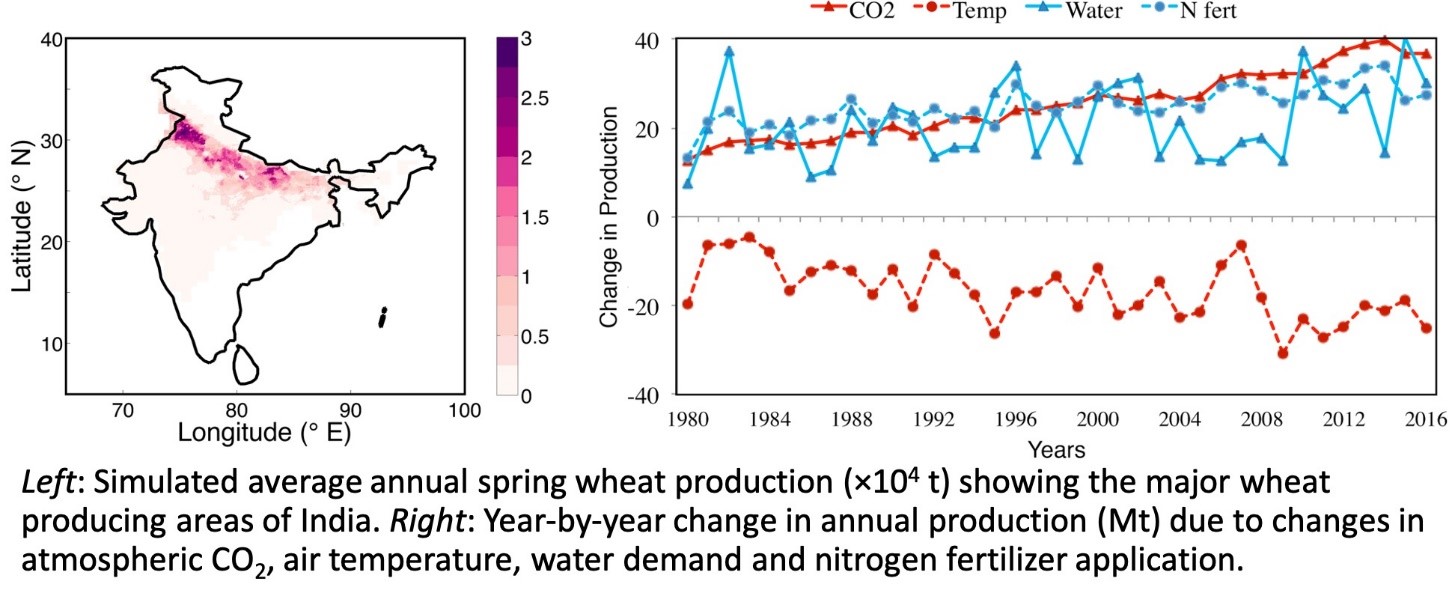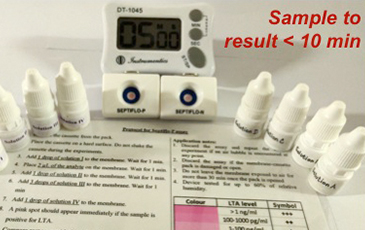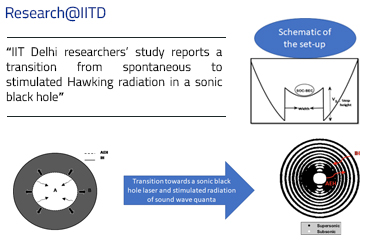Study Finds Impact of Environmental Changes and Land Management Practices on Wheat Production in India
Share this on

Scientists from IIT Delhi, in collaboration with scientists from The University of Illinois and the Indian Agricultural Research Institute (Shilpa Gahlot, CAS, IIT Delhi; Tzu-Shun Lin, University of Illinois; Atul K. Jain, University of Illinois; Somnath Baidya Roy, CAS, IIT Delhi; Vinay K. Sehgal, Indian Agricultural Research Institute, New Delhi and Rajkumar Dhakar, Indian Agricultural Research Institute, New Delhi), have developed a new model to study the growth processes of spring wheat, a staple food for millions in India and the world.
They used this model to study how environmental factors and land management practices have affected spring wheat production in India over the last four decades. Their research paper was published in a leading European journal Earth System Dynamics (https://esd.copernicus.org/articles/11/641/2020/) and was selected as European Geosciences Union Highlight Article.
The scientists found that elevated CO2 levels in the atmosphere, irrigation, and nitrogen fertilizers have increased wheat production by 22 Mt (30%), 8.47 Mt (12%), 10.63 Mt (15%) over 1980 levels. In contrast, rising temperatures have reduced production by 13 Mt (18%). These effects vary across the country, thereby affecting production at regional scales.
The most interesting aspect of this study is that atmospheric CO2 and temperature have contrasting effects on production. CO2 emissions from industries, power plants and cars are rapidly increasing. CO2 is plant food. During photosynthesis, plants absorb atmospheric CO2 to grow. More CO2 in the atmosphere caused the wheat production to go up. This effect is known as CO2 fertilization. However, more CO2 in the atmosphere also causes global warming. Increasing temperatures have had a negative effect on wheat production.

So far, the positive effect of increased CO2 is stronger than the negative effect of warming, leading to a net increase in production. It remains to be seen what happens in the long term.
Some idealized experimental studies on crops in the US have suggested that the CO2 fertilization effect is temporary and global warming will cause the production to decrease in the long run.
The outcomes of this paper unearthed interesting new aspects of regional variability in wheat production that can be useful for building climate change mitigation policies in the context of food security.
One example is that of Central India where the climate is favourable for wheat but the production is low due to lack of irrigation. Building irrigation infrastructure in this region can significantly improve wheat production. Another example is that of the Himalayan states like Uttarakhand, Himachal and Kashmir. This region is too cold for wheat now but global warming can make this region more favourable for large-scale wheat cultivation.
The IIT Delhi team plans to use this model to study such competing effects of different climate factors on production of crops in India as well as evaluate the effectiveness of different crop management practices to mitigate the negative effects of climate change on food security.
For any query, pl email: Prof Somnath Baidya Roy, Centre for Atmospheric Sciences, IIT Delhi- drsbr@cas.iitd.ac.in




